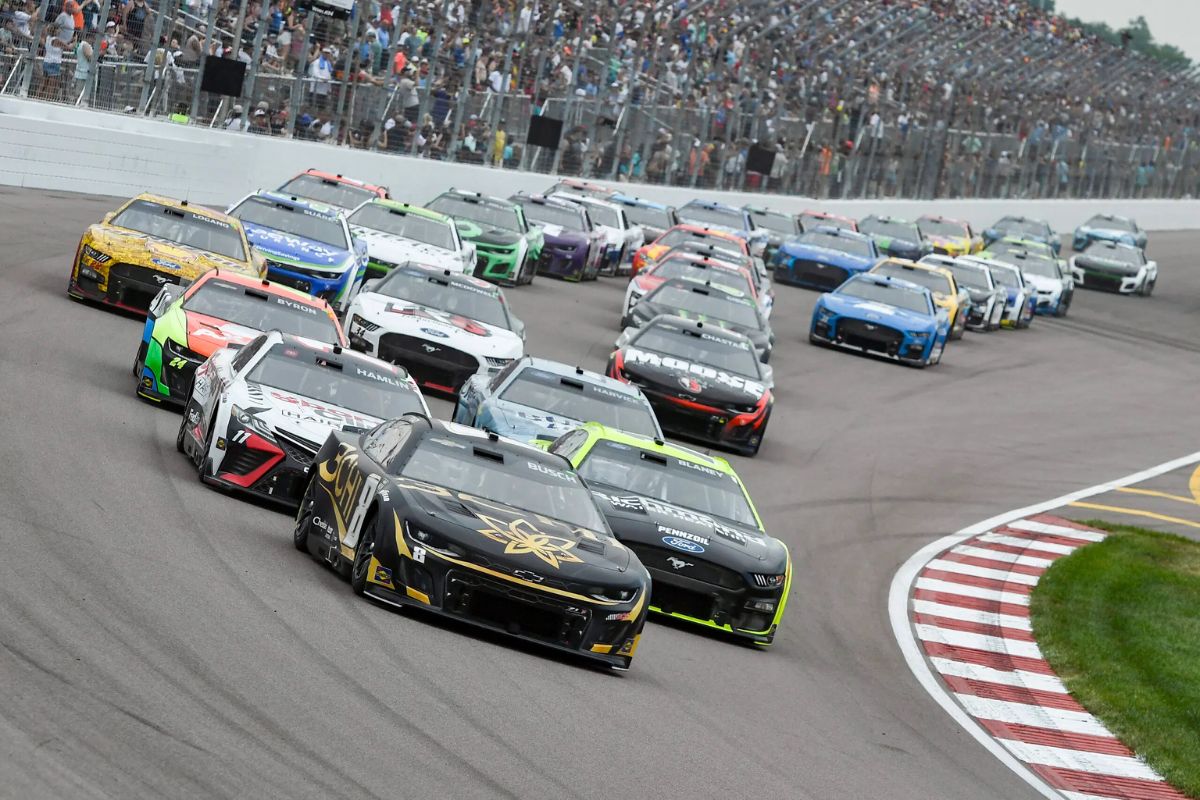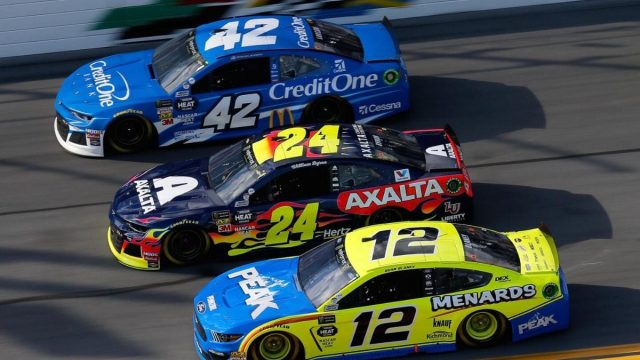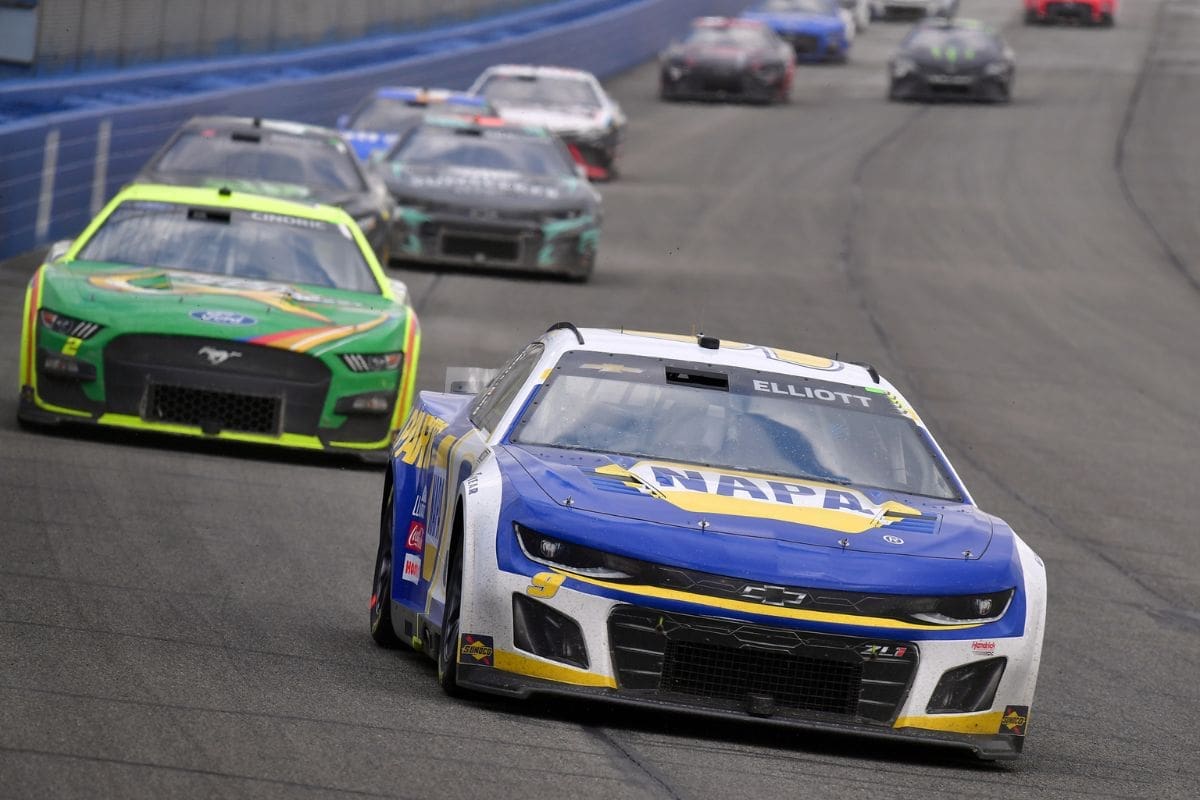Wings and Splitters Debate in NASCAR: The introduction of wings and splitters in NASCAR’s current era has provoked a multifaceted debate regarding the sport’s evolving identity. While supporters argue these aerodynamic improvements are crucial for optimizing performance and safety, critics lament the departure from traditional stock car aesthetics, fearing a disconnect with the sport’s heritage. This disagreement reflects varying perspectives among fans and highlights deeper generational divides that challenge NASCAR’s future direction. As stakeholders grapple with these changes, the conversation raises questions about the balance between innovation and tradition that could redefine the nature of racing.
Key Highlights
- The introduction of wings and splitters in NASCAR has polarized opinions, affecting aesthetics and traditional racing appeal.
- Critics argue these components complicate driving and dilute brand identity, while supporters cite their aerodynamic benefits.
- Generational differences among fans influence perceptions of wings and splitters, reflecting nostalgia for classic designs.
- Ongoing discussions highlight the balance between performance enhancements and maintaining NASCAR’s historical identity and allure.
NASCAR’s Car of Tomorrow
The introduction of NASCAR’s Car of Tomorrow in 2007 marked a vital moment in the sport, as it aimed to improve safety standards but sparked widespread criticism regarding its design and general impact on fan engagement. This new vehicle was designed to enhance driver safety, a paramount consideration following numerous high-profile accidents.
However, the aesthetic departure from its predecessors led to a backlash from all fans and drivers, who found the new design less appealing and more utilitarian. Critics pointed out that the Car of Tomorrow’s boxy silhouette diminished the traditional allure of stock car racing, which had long been characterized by its sleek, muscular lines.
In addition, the introduction of aerodynamic features such as the ‘wings and splitter’ created a visual disconnect from the cars that fans had grown to love. Dale Earnhardt Jr.’s expression of frustration represented the sentiment prevailing within the driver community, suggesting that the car’s performance did not match its intended purpose.
“Really, really, really frustrating.” – (dale jr.)
This discontent extended beyond aesthetics; it reflected a broader concern regarding the diminishing excitement of the racing experience. The Car of Tomorrow, while improving safety, inadvertently homogenized competition, leading to questions about the sport’s future direction.
Mixed Reception for the Gen 5 Car
Amid the backdrop of heightened safety concerns and evolving race dynamics, the Gen 5 car emerged as an essential development in NASCAR, aiming to balance the urgent need for driver protection with the desire for competitive excitement. This vehicle, formally known as the ‘Car of Tomorrow,’ represented a meaningful shift from its Gen 4 predecessor, which had been criticized for its safety shortcomings and lack of resemblance to street models.
The Gen 5 car was a product of extensive research and development, focusing on improving driver safety without sacrificing on-track performance. The immediate aftermath of its implementation was promising, with no injuries reported that resulted in missed races. Importantly, incidents like Elliott Sadler’s near-fatal crash highlighted the car’s advanced safety features, which included energy-absorbing materials and improved seat positioning.
“These cars are built to be safer, and if I can get out of that and walk through that, I think it did its job.” – (Elliott Sadler)
However, the reception was mixed, as the car’s aerodynamics and handling characteristics sparked debates among stakeholders.
| Aspect | Gen 5 Car Features | Reception |
|---|---|---|
| Safety | Improved energy absorption | Generally positive |
| Handling | Increased side-by-side racing potential | Mixed, some concerns |
| Competitive Edge | Easier overtaking | Positive for some teams |
| Manufacturer Input | Limited resemblance to street models | Criticism from purists |
| Design Philosophy | Focus on safety over tradition | Divided opinions |
Fan and Driver Reactions
Fan and driver reactions to the Gen 5 car reveal a complex landscape of dissatisfaction and frustration, emphasizing the challenges faced by NASCAR in balancing safety innovations with the traditional appeal of stock car racing.
Despite the Gen 5 car’s introduction of energy-absorbing foam in door panels and a uniform design, its aesthetic and functional changes led to notable pushback from all fans and drivers. The detachable wing and adjustable splitter, while intended to improve adaptability across different tracks, were criticized for contributing to a loss of brand identity in NASCAR’s iconic vehicles.
Notable drivers such as Tony Stewart, Dale Earnhardt Jr., and Greg Biffle articulated their discontent, with Stewart famously dubbing the car ‘a flying brick.’ This characterization highlights the disconnect between the car’s design and the expectations of all competitors and enthusiasts. Dale Jr.’s comments regarding the car’s handling difficulties represent the broader frustration within the driver community, as he acknowledged the steep learning curve associated with mastering Gen 5’s unique characteristics. Biffle echoed this sentiment, noting the challenges in influencing the car’s behavior on the track.
“It’s going to take some time to figure it out, but right now it’s about the most frustrating thing I’ve had to deal with in this sport, and I’ve had to deal with some pretty frustrating things.” – (dale jr.)
“It is a difficult car, to get to what do you want it to do. It’s hard to influence the car to do stuff.” – (Biffle)
Ongoing Debate Among Fans
Ongoing discussions within the NASCAR community reveal a polarized perspective on the evolution of car designs, particularly highlighting the contrasts between the perceived aesthetic shortcomings of the Car of Tomorrow (COT) and the contemporary Next-Gen vehicle‘s sleek appearance compared with its performance limitations.
Fans continue to express their nostalgia for the COT, which, despite its controversial looks, prioritized safety features that greatly improved driver protection. This focus on safety was a vital advancement in the sport, allowing drivers to drive the perilous nature of high-speed racing.
Conversely, the Next-Gen vehicle, with its modern design and streamlined silhouette, has captivated many fans with its visual appeal. However, this allure comes with notable drawbacks; the car has frequently struggled to facilitate overtaking, raising concerns about on-track competitiveness. The inability to pass effectively diminishes the excitement of racing, a fundamental element for fan engagement.
Additionally, safety issues emerged with the Next-Gen cars, particularly emphasized by incidents like the concussion that sidelined Kurt Busch in 2022. Such controversies further complicate the narrative surrounding the vehicle’s design and functionality.
Fan Opinions on the Gen 5 Car
The Gen 5 car has ignited a diverse array of opinions within the NASCAR community, reflecting a complex interplay of nostalgia, design aesthetics, and performance evaluations that continue to shape discussions surrounding the sport’s immersion. This vehicle, often referred to as the Car of Tomorrow (COT), has polarized fans who are divided between admiration and disdain for its distinctive features.
The aesthetic appeal of the COT remains a controversial issue. Some fans praise the design, considering it groundbreaking and striking. Conversely, others regard it as one of the sport’s least attractive iterations.
“The first iteration of the COT was the ugliest car in the sports entire history.” – (fan reaction)
“You are correct…that is unpopular.” – (fan reaction)
The dynamics of the wing and splitter have sparked intense debate regarding their impact on racing. The overall performance and competitiveness of the Gen 5 car are frequently scrutinized.
“It’s unpopular, but I agree. The COT was a beauty with the wing and front splitter.” – (fan reaction)
A multitude of opinions exists within this discourse. While some enthusiasts express an unabashed fondness for the COT’s design, noting schemes like the Cheerios 43 as exemplary, others oppose the car’s visual attributes, calling for the demise of the wing and splitter.
“Cheerios 43 CoT is the best scheme ever created with the additional of the wing.” – (fan reaction)
“Death to the wing and the splitter.” – (fan reaction)
This difference shows the emotional investment fans have in NASCAR’s evolution, often rooted in their personal experiences and memories associated with the sport. Ultimately, the Gen 5 car, whether loved or loathed, endures as a crucial topic in NASCAR conversations, underlining its lasting influence on the identity of the sport and its fan base.
“I think it would look better on the current car given it’s more like a sports car than the previous generations.” – (fan reaction)
“Everyone HATED this car back when it raced. HATED it.” – (fan reaction)

News in Brief: Wings and Splitters Debate in NASCAR
The ongoing debate regarding wings and splitters in NASCAR highlights a considerable rift within the fan base, reflecting broader tensions about tradition versus innovation. While proponents emphasize improved performance and competitive parity, critics lament the departure from the sport’s classic aesthetic.
This discourse not only brings attention to generational divides among fans but also raises questions about the future identity of NASCAR as it navigates the balance between modern engineering advancements and the cherished heritage of stock car racing.
ALSO READ: NASCAR’s Financial Move in Charter Talks Leaves Foreign Investors Stunned


